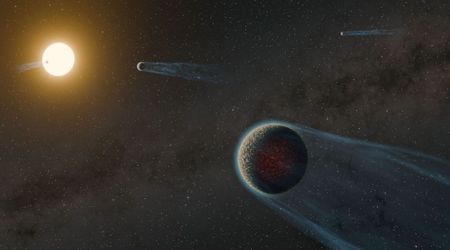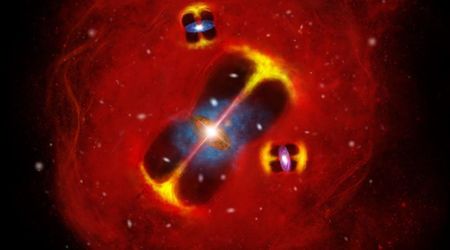M76 Planetary Nebula

Most planetary nebulae appear as rings or disks, but a few of them have an irregular shape.
The best example of this type of planetary is M76 (the Little Dumbbell Nebula), lying in the constellation Perseus at a distance of roughly 3,600 light-years.
The easiest way to find the nebula is to start from the 3.5 magnitude star 51 Andromedae and make your way about two degrees north-northeast until you come to 4th-magnitude Phi Persei, a variable star. From here aim your telescope less than a degree northwest of the star, and you will have M76 in the eyepiece’s field.
At magnitude 12.2 M76 is the faintest object in the Messier catalog, but you can see it even with a 2.4-inch telescope as an elongated patch that is 64? across and runs northeast-southwest. Larger telescopes and high magnification show some fainter areas of nebulosity at each end of the nebula, forming the classic shape from photos. With an OIII filter still more nebulosity is apparent on both sides, and especially beyond and south of the fainter northeast lobe.









